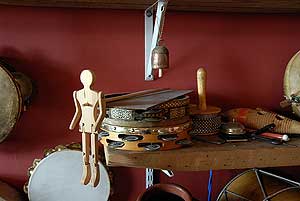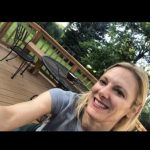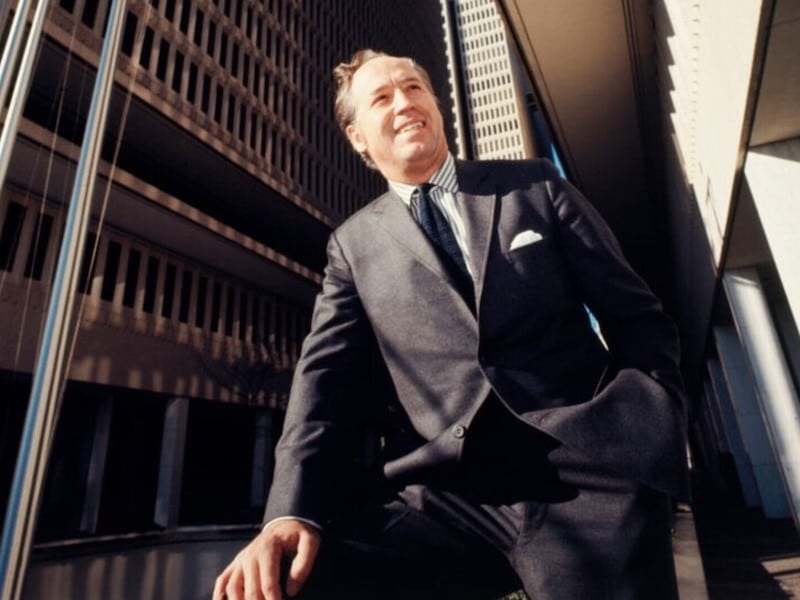Passion for Percussion
He’s a worldbeat drummer with a collection of over 100 percussion instruments. He lives in a Corktown building. Meet Detroit musician and collector Mark Sawasky.
The moment you enter Mark Sawasky’s loft in Corktown, it’s clear he’s got a thing for drums. Not just any old drums. All kinds of percussion instruments from around the world — hand drums, stick drums, frame drums — all acoustic, all in different shapes and sizes.
 Though they occupy a good chunk of the expansive living area he shares with his girlfriend and two cats, they hardly take up space. Rather, they complement the artsy interior with its rust-colored walls, eclectic furnishings and funky artwork. And though they are displayed on the floor and on shelves like objets d’art, they are more than mere decoration. The display is for Sawasky’s convenience. “I like to be able to see everything,” he says. “It makes it easy to just grab something to play.”
Though they occupy a good chunk of the expansive living area he shares with his girlfriend and two cats, they hardly take up space. Rather, they complement the artsy interior with its rust-colored walls, eclectic furnishings and funky artwork. And though they are displayed on the floor and on shelves like objets d’art, they are more than mere decoration. The display is for Sawasky’s convenience. “I like to be able to see everything,” he says. “It makes it easy to just grab something to play.”
The collection now numbers more than 100 “and growing,” says Sawasky one July evening as he excitedly talks about two 1960s mini congas he is planning to buy from a friend the next day. “A lot of my drums have been given to me. They’re handmade. They’re not toys. People know I play weird stuff, stuff with character.”
Sawasky, 41, is well known on the Detroit music scene. He’s a percussionist and occasional vocalist with such groups as the multiculti Immigrant Suns, of which he’s an original member; the flamenco group La Chispa; the world jazz group Musique Noire; the 15-piece Odu Afrobeat Orchestra; Eastern Winds, with its Armenian, Eastern European and Middle Eastern folk sounds; and Drums and Wires, a multicultural duet performing original and traditional music.
Magical sounds
 The diversity works for Sawasky. “Mark thrives off playing diverse types of music,” says Ara Topouzian, the leader of Eastern Winds, adding that Sawasky’s collection is definitely unique. “He’s not like a percussionist with 30 tambourines. Mark will have close to 100 different percussion types.”
The diversity works for Sawasky. “Mark thrives off playing diverse types of music,” says Ara Topouzian, the leader of Eastern Winds, adding that Sawasky’s collection is definitely unique. “He’s not like a percussionist with 30 tambourines. Mark will have close to 100 different percussion types.”
Sawasky has never been interested in mastering one type of music or one instrument. “I always want to be learning something new,” he says. “People say someone’s a ‘master.’ I don’t believe in that. You can always learn more.” These days he’s into Brazilian music. It used to be Arabic. “I get into phases,” he says.
He’s enjoying his latest challenge, playing standard jazz numbers with Musique Noire. “I don’t consider myself a jazz player,” says Sawasky, one of the group’s two percussionists. While his counterpart plays mostly Latin instruments, he says, “I play all the weird stuff.”
 Whatever he’s playing, whatever phase he’s in, when it comes to his collection, Sawasky is always happy to show it off. Though he insists he has no favorites, he repeatedly extols the virtues of the frame drum, generally known as a tambourine. Sawasky takes one from the wall. The wood and goatskin drum has a row of small circular metal hoops fastened to the rim. “A friend brought it back from Iran,” he says as he demonstrates its sounds with a series of thump-thumps and chang-changs.
Whatever he’s playing, whatever phase he’s in, when it comes to his collection, Sawasky is always happy to show it off. Though he insists he has no favorites, he repeatedly extols the virtues of the frame drum, generally known as a tambourine. Sawasky takes one from the wall. The wood and goatskin drum has a row of small circular metal hoops fastened to the rim. “A friend brought it back from Iran,” he says as he demonstrates its sounds with a series of thump-thumps and chang-changs.
Next he picks up a terra cotta pot from South India. “This is a gatham,” he says. “It’s a pot that doubles as an instrument.” Then he grabs a tar, which is a frame drum from North Africa. “These are crowd pleasers,” says Sawasky of the tar, whose diameter is big enough to cover his torso. “They just have a sort of magical sound. They’re multi-tonal, primal.”
Global influences
 Sawasky appreciates the instruments’ histories, often explaining where they came from and what they were used for. The tar, for instance, was originally used for sifting wheat.
Sawasky appreciates the instruments’ histories, often explaining where they came from and what they were used for. The tar, for instance, was originally used for sifting wheat.
One of his favorite instruments is an ancient Egyptian bow once used for hunting. It’s made of a gourd, a string, a bow, a stick and a little basket filled with sand.
Another favorite is a frame drum called a riq, which was made for him by an Iraqi musician. Constructed with fish skin and five double sets of symbols, “It’s like a feast of sounds,” says Sawasky, who used to take it to open mic nights. “People never saw a tambourine played like this. I played it like a whole drum set.”
Sawasky’s passion for percussion started early. Growing up in upstate Alpena, he banged on everything from oatmeal boxes to coffee containers on his parents kitchen floor. “My mom would clap,” he says. His father, a former rock musician, also appreciated the budding talent. They bought him a drum kit and paid for lessons when he was in grade school. By the time Sawasky hit high school, he was a bit of a star. “No freshman ever got to play snare drum,” he says of band class, where he was the drum version of first chair. “Everybody knew me.”
 Sawasky came to Detroit via Plymouth when he moved during high school to live with his father after his parents separated. “I knew about Detroit and the music,” says Sawasky, who didn’t move to the city until nearly a decade after graduating high school in 1984. “I wish I had moved to Detroit right away,” he says. “It was eclectic and interesting and had so much character. I loved the city and met so many people. I thought, ‘It’s so cool.’ ”
Sawasky came to Detroit via Plymouth when he moved during high school to live with his father after his parents separated. “I knew about Detroit and the music,” says Sawasky, who didn’t move to the city until nearly a decade after graduating high school in 1984. “I wish I had moved to Detroit right away,” he says. “It was eclectic and interesting and had so much character. I loved the city and met so many people. I thought, ‘It’s so cool.’ ”
In 1992, he got into his first of a series of lofts in the city — “real lofts in real old buildings,” he says — and has been in his current home for the past five years.
Today, Sawasky is focused on doing music full-time while juggling painting and construction jobs on side. “The big picture everyone wants is to make it,” says Sawasky.
He was encouraged to take his music farther after talking to well-known percussionist Yousif Sheronick at the Concert of Colors. “He’s made it. He played all the same instruments as I have,” says Sawasky. “He seemed surprised someone in Detroit was into all these instruments. I’ve studied so many techniques and collected so many different instruments. That’s what I think is rare. The diversity.”
Ellen Piligian is a Detroit-area freelance writer.
All Photographs Copyright Dave Krieger






